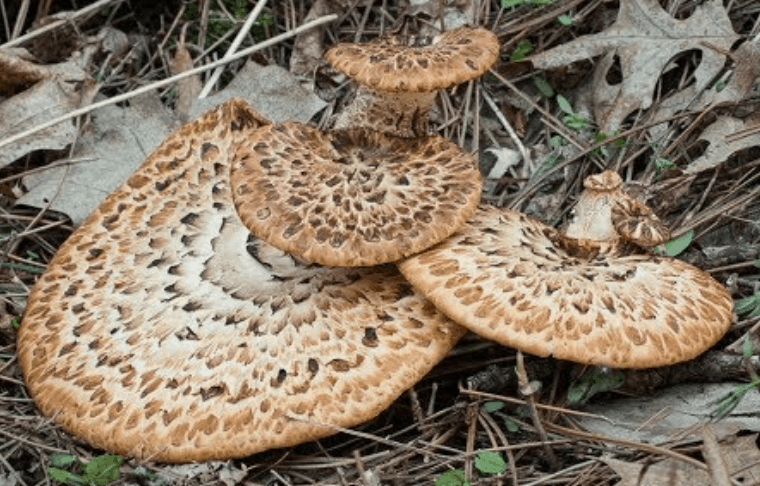We’re all familiar with the grocery store staple, the button mushroom. Many of us have also cooked with a Portobello mushroom. And those who forage for mushrooms in the wild will know about morels and maybe even reishi mushrooms.
But have you ever heard of the pheasant tail mushroom? This lesser known fungus, also known as a pheasant back mushroom, a hawk’s wing mushroom or a dryad’s saddle, is also a treat to find in the wild. It’s common in North American, Australia, Asia and Europe, in both living and dead hardwood trees.
Like This Article? Pin it on Pinterest

Let’s look at 4 facts about the pheasant tail mushroom
1. What exactly is this mushroom?
This interesting looking shelf mushroom was given the name pheasant tail or pheasant back due to the fact the colors and scales on its top resemble the patterns of pheasant feathers.
It’s also called dryad’s saddle due to its saddle-like shape. A dryad was a creature in Greek mythology that could ride on the “saddle” shape of this mushroom.
2. How Do You Identify these “Dryad’s Saddle” mushrooms?
In the United States, the pheasant tail is usually found east of the Rocky Mountains. It fruits in the spring and sometimes in the fall. In fact, you’ll often find it when searching for morels in the spring, because they fruit at similar times.
It grows up to 20 inches across, making it relatively easy to spot, but you’ll want to harvest them before they get this big to ensure they’re tender.
The pheasant tail grows from the side of a tree or stump, either alone or in clusters. It is round or kidney shaped, with a top that’s flat or slightly depressed in the middle – hence the reference to looking like a saddle.
The surface is tan or yellowish with dark scales that make it look like the feathers on a pheasant’s back, and the interior is white. The short, thick stem may be attached to the side of the cap as it grows off a tree, or attached to the bottom of the mushroom but off-centered.
As always, it’s a good idea to seek expert advice if you’re uncertain about the mushrooms you’ve found in the wild. This mushroom doesn’t have any toxic lookalikes, but it’s better to be safe than sorry.
3. How Do You Cook a Pheasant Back Mushroom?
It’s best to harvest the pheasant tail when it’s young, as they tend to get tough when they age. However, even the larger, older ones can be used as a base for soup stock.
Harvest them when young, slice them into small pieces and sauté them over low heat in butter, adding garlic or shallots. Their slightly lemony flavor makes them ideal with fish or chicken.
4. What are the benefits of Pheasant Tail Mushrooms?
The health benefits of the pheasant tail mushroom aren’t documented by clinical studies, but eating them would be as beneficial as eating other fungi. The advantages of mushrooms include varying levels of protein, fiber, and vitamins, and additional properties such as antioxidant, anti-inflammatory, and being good for heart health. Plus they’re low in calories.
As well, the pheasant tail plays a role in the forest ecosystem by decomposing wood, including elm, ash, beech, poplar, maple and more. You can even make paper with pheasant tail mushrooms.
Final Thoughts
The pheasant’s tail or pheasant’s back mushroom is not as well known or as common as other mushroom varieties.
But once you learn how to identify them and cook with them, you’ll enjoy finding them and harvesting them as much as other species.






